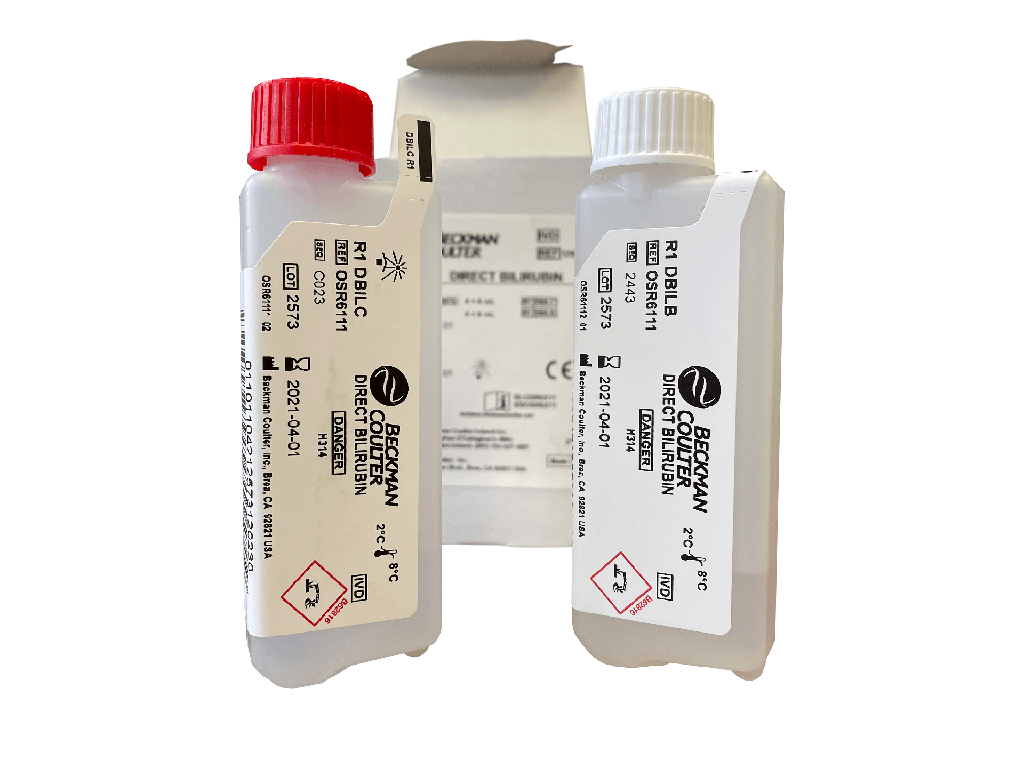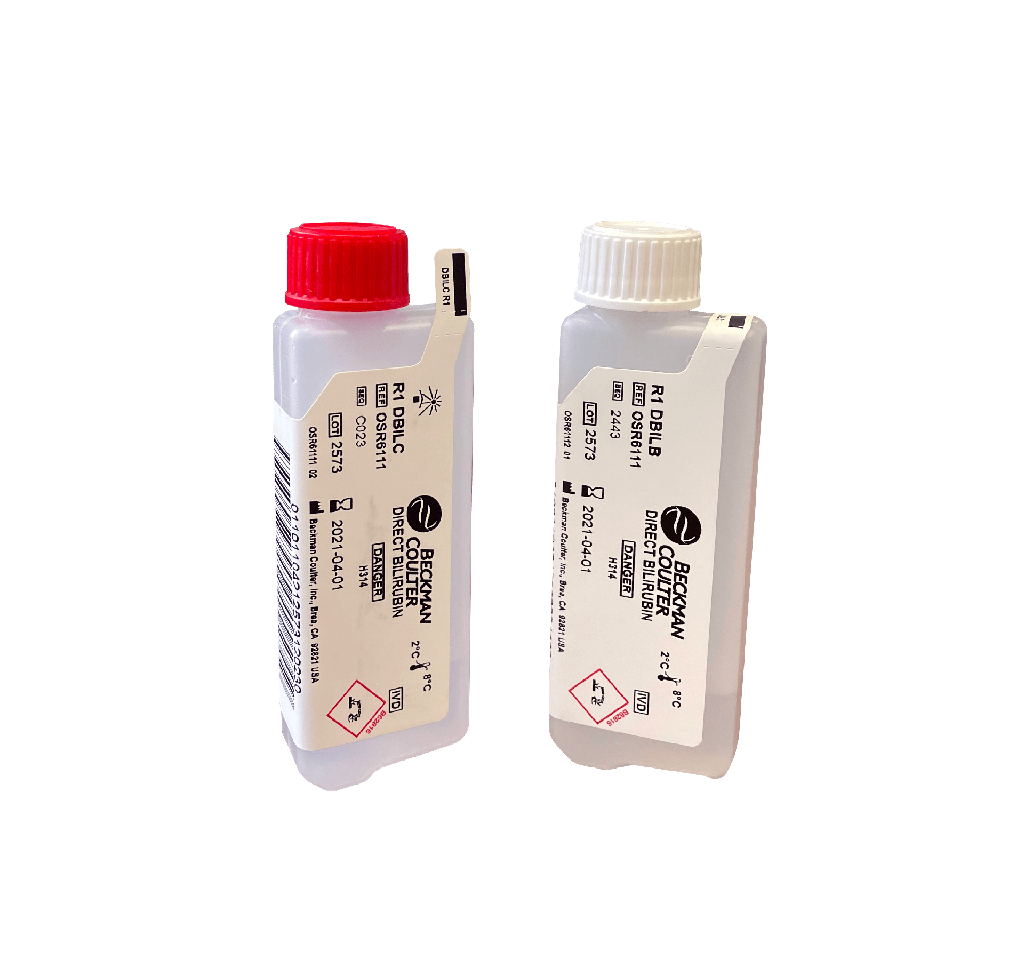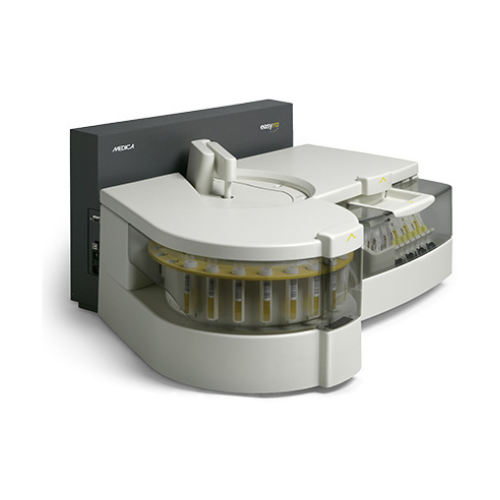For Business Use Only. Does Not Ship to Residential Addresses. For use inside an Analyzer, Sold Separately.
OSR6109 Olympus AST (Aspartate Aminotransferase) Reagent, 4 x 980 Tests
Product Code: OSR6109
Shipping Weight: 10.00lbs (4.54kg)
Specifications
Manufacturer: Beckman Coulter
Application: Reagent
Number of Tests: 4 X 980 tests
Storage Requirements: Requires Refrigeration
Test Name: Aspartate Aminotransferase (AST)
Test Type: Hepatic / General Chemistry
UNSPSC Code: 41116004
Volume: 4 X 25 mL
Intended Use
System reagent for the quantitative determination of Aspartate Aminotransferase (EC 2.6.1.1) activity in human serum on Beckman Coulter AU analyzers. For in-vitro diagnostic use only.
AST R1: Light yellow; Clear; Liquid; Mild odor
AST R2: Yellowish; Clear; Liquid; Characteristic odor
About Aspartate Aminotransferase (AST)
Serum GOT (glutamic oxalacetic transaminase) is an alternate name for this enzyme which is internationally known as AST (aspartate aminotransferase) by the International Federation of Clinical Chemistry (IFCC) standards. Serum AST is one of a group of enzymes that catalyzes the interconversion of amino acids and keto acids by the transfer of amino groups. Transaminases are widely distributed in body tissues with significant amounts found in the heart and liver. Lesser amounts are also found in skeletal muscles, kidneys, pancreas, spleen, lungs, and brain. Injury to these tissues results in the release of the AST enzyme to general circulation.
Following a myocardial infarction, AST in serum begins to increase within 6 to 8 hours of the onset of pain, reaching a peak within 18 to 24 hours and falling to normal by the fourth or fifth day. Serum values may increase to 15 to 20 times normal levels and the increase is roughly proportional to the degree of tissue damage.
Methodology
This AST procedure utilizes a modification of the methodology recommended by the IFCC. In this method, aspartate aminotransferase (AST) catalyzes the transamination of aspartate and α-oxoglutarate, forming L-glutamate and oxalacetate. The oxalacetate is then reduced to L-malate by malate dehydrogenase, while NADH is simultaneously converted to NAD+. The decrease in absorbance due to the consumption of NADH is measured at 340 nm and is proportional to the AST activity in the sample.

Additional Information
Aspartate Aminotransferase (AST) - Safety Data Sheet
Aspartate Aminotransferase (AST) - Instructions for Use





















